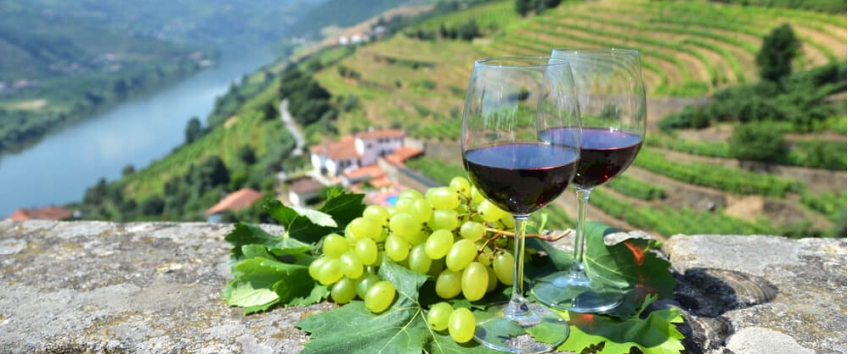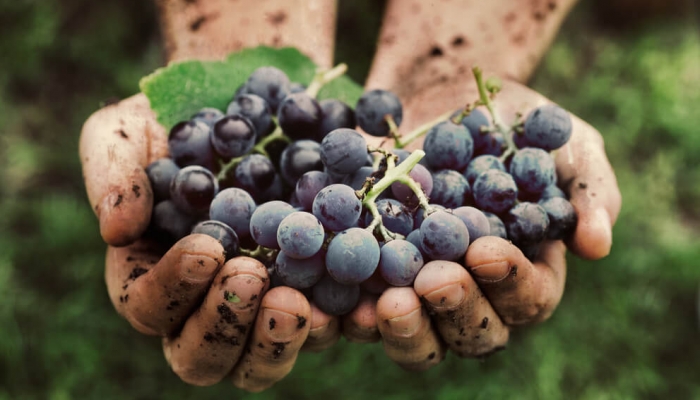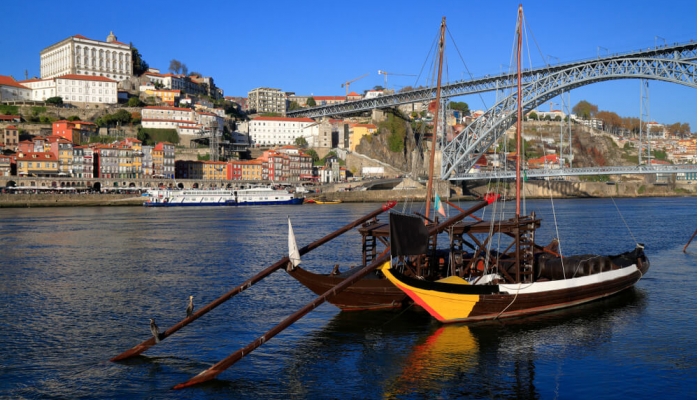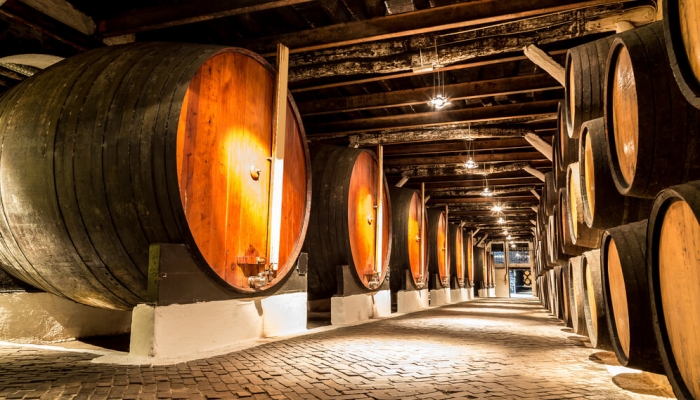The More Grapes the Merrier! - How the Famous Port Wines Are Produced
Gastronomy and Wines
2020-04-15

Produced in the Demarcated Douro Region, located on the Northeast of Portugal surrounded by mountains that give it particular mesological and climatic characteristics, Port Wine is the product of centuries-old knowledge and art. It is a unique wine, made from hot summers and freezing winters.
But, how is Port Wine made?
Port Wine: a sublime wine with unique characteristics
Port wines are the product of different grape varieties and different aging processes. They differ from other common wines due to their peculiar characteristics: a diversity of grape varities that gives it a richness and intensity of unique aromas, an unparalleled persistence of aroma and flavor, a wide range of sweetness, a great diversity of colors and a high content of alcohol (between 19% to 22%).
The harvests: the birth of the nectar of the Gods
Between the beginning of September and the end of October, the Douro Region experiences the magical ritual and the human commotion of the grape harvest. Every year groups of agricultural workers come to the region to harvest the grapes.
Traditionally, it was women who harvested and placed the grapes in the baskets, while the men and the younger ones carried the baskets up the slopes. Now the oxen have been replaced by tractors to transport the grapes to the wineries.

Here, the grapes are placed in mills and undergo the process of destemming and treading (or crushing). In many Wineries and Wine Estates before, a group of men got in line inside the mills stepped the grapes to the sound of joyful chanting. Now this was replaced by mechanical processes. However, there are still Wineries that have not given up the manual process, for claiming its authenticity and prestige.
Embark with us on our Douro Harvest Cruise and get to know the whole process!
Fermentation: the secret to success
The must is fermented with the yeasts transforming the sugar into alcohol. This is a crucial moment, since it is important that the must is not allowed to exceed 6 to 7 degrees Baumé, when the content of the winemaking Vats is transferred to steel ones or barrils.
At the desired time, the fermentation process is interrupted by the addition of wine spirit (100 liters for each 450 liters of must) whose quality is previously recognized by the Port Wine Institute. It is at this time that the mythical port wine begins to be born.
It is, therefore, with the addition of the wine spirit to the must that transforms wine into Port Wine. The aging process then follows. The wine remains in the Douro during the winter and is only sent to the warehouses, or wine cellars, in Vila Nova de Gaia the following spring, where it ages in barrels characteristic of the Douro Region.
The legendary rabelo boats: the transport of times gone by
In the past, Port Wine was transported from the Douro valley to Vila Nova de Gaia in typical rabelo boats, capable of holding 30 to 70 wine barrels. This means of transport was replaced in the last century by the train and, later, by the tank trucks.

The beautiful rabelo boats, which were part of the history of this wine and this city, continue enliven the Douro River. Be sure to sail on these typical boats, on a magnificent 06 bridges Cruise, between the banks of Porto and Vila Nova de Gaia.
Vila Nova de Gaia Wine Cellars: the art of aging well
The history of Port Wine takes place mostly in Gaia. The election of this city for the storage of wine goes back to the history of wine export since the 17th century, made by sea. In addition, the climatic conditions of this north-facing slope allow the warehouses to reach the ideal temperatures for the preservation of the qualities of this wine.
This is where the winemaker makes the big decisions, such as whether to declare a wine Vintage. Depending on the type of wine desired winemakers must choose the nature and capacity of the containers and the duration of the aging process, which can extend over several years.
Port Wine is born in the Douro, but it is in Vila Nova de Gaia that it ages, reinforcing its unique natural qualities.
There are many companies that export Port Wine and can be found along the riverside of Gaia. We can mention, for example, the Calem Wine Cellars, Burmester Wine Cellars, Sandeman Wine Cellars, Ramos Pinto, Ferreira or Taylors, among many others.

The Port Wine Cellars, open to the public, offer an unforgettable atmosphere and a wonderful (and mandatory) journey through art and the flavors that surround this delicious wine. Come and meet them, on board our 6 Bridges Cruise in the Douro with Fado.
Enjoy, also, a delicious glass of Port Wine on board our One Day Cruises and feel the magic of this unique famous nectar.

